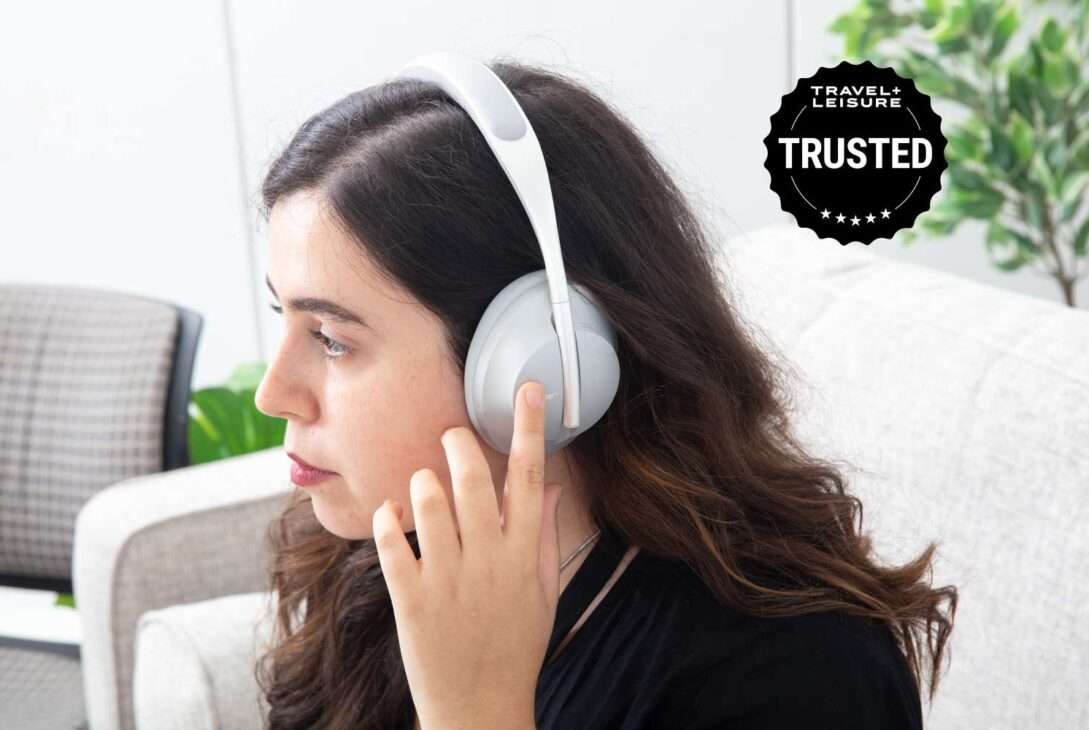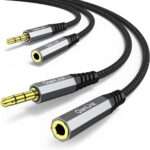Headphones are a great way to enjoy music or audio. However, finding a pair that remains comfortable during extended use can be challenging. Many options may lead to discomfort or pain over time. This is where headphone comfort tips come in. In this article, we’ll look at some of the best ways to make your headphones more comfortable and enjoyable to use.
Understanding Headphone Comfort
Importance of Headphone Comfort
Comfort is crucial for an immersive listening experience. It affects how long you can wear your headphones and how well you can focus on the audio without distractions.
What Makes Headphones Comfortable?
Comfortable headphones are not merely about cushioned ear cups and adjustable headbands; they encompass a combination of factors. Each element, from ergonomic design to breathable materials, is crafted to ensure prolonged comfort. This thoughtful design makes extended listening sessions more enjoyable.
Experiment with Different Styles
There are various headphone styles available, including over-ear, on-ear, and in-ear headphones. Each style offers unique benefits and drawbacks in terms of comfort.
Over-ear vs. On-ear vs. In-ear Headphones
Over-ear headphones encase the ears entirely, providing excellent noise isolation and comfort but may feel bulky for some users.
On-ear headphones sit directly on the ears, offering a more compact design but may cause discomfort during extended use.
In-ear headphones fit snugly inside the ear canal, offering portability and minimal interference with glasses or hats but may cause discomfort for users sensitive to ear canal pressure.
Material and Design Considerations
The choice of materials and design features can significantly impact comfort. Factors such as cushioning, weight distribution, and adjustable sizing play a crucial role in determining how comfortable headphones are to wear.
Adjusting Headphones for Comfort
Proper Fit and Adjustments
One of the most crucial factors in headphone comfort is finding the right fit. Ill-fitting headphones can cause pressure points, discomfort, and even pain after prolonged use.
When choosing headphones, pay attention to the headband and earcup size to ensure a snug yet comfortable fit. Adjustable headbands and swiveling earcups can help customize the fit to your unique head shape.
Earpad Adjustments
Experiment with different adjustments until you find the most comfortable configuration for your head shape and size.
Headband Adjustments
The headband plays a crucial role in distributing the weight of the headphones evenly across your head. If the headband is too tight, it can cause discomfort and pressure points.
Conversely, if it’s too loose, the headphones may slip or slide around, leading to an insecure fit. Adjust the headband to ensure a snug yet comfortable fit, taking care not to overtighten it.
Investing in Quality Materials
Quality materials can make a world of difference in headphone comfort. Opt for breathable fabrics and memory foam cushions that alleviate pressure points and promote airflow, keeping your ears cool and comfortable.
Choose the Right Earpad Material
The material of the earpads plays a significant role in headphone comfort. Common earpad materials include foam, leather, and velour.
Foam earpads offer cushioning and comfort but may compress over time, leading to reduced comfort.
Leather earpads provide durability and a luxurious feel, but they may trap heat and sweat, leading to discomfort during long listening sessions.
Velour earpads offer a balance of comfort and breathability, making them an excellent choice for extended use.
Taking Breaks
Importance of Taking Breaks
It’s essential to take regular breaks when using headphones for an extended period. Extended periods of headphone use can lead to fatigue and discomfort. Taking regular breaks allows your ears and head to rest and recover.
Recommended Break Intervals
Prolonged headphone use can lead to fatigue and discomfort, so be sure to give your ears a rest every hour or so. Use this time to stretch, move around, and give your ears a chance to recover from the pressure of headphone use.

Credit: www.amazon.com
Consider Wireless Options
Wireless headphones offer the freedom to move around without being tethered to your device, enhancing comfort and convenience. With no wires to tangle or snag, wireless headphones provide a seamless listening experience, whether you’re working out at the gym or commuting to work.
Additionally, many wireless headphones feature lightweight designs and adjustable headbands for maximum comfort during extended use.
Opt for Noise-Canceling Technology
Noise-canceling headphones use advanced tech to block out background noise, letting you focus on your music distraction-free. With less external noise, you can listen at lower volumes, reducing ear fatigue. Plus, many models have comfy earpads and adjustable headbands for long-term comfort.
Using Accessories
Ear Hooks or Ear Fins
If you struggle with keeping your earbuds in place during activities, consider using ear hooks or ear fins. These accessories attach to your earbuds and provide additional support to keep them securely in your ears, even during vigorous exercise.
Ear hooks loop over the tops of your ears, while ear fins nestle into the contours of your outer ear, providing a secure fit without sacrificing comfort.
Cushions and Pads
Investing in cushioned earpads or headbands can provide additional support and padding for enhanced comfort.
Headphone Stands and Hooks
Utilizing headphone stands or hooks when not in use can alleviate strain on your neck and provide a convenient storage solution.
Maintaining Hygiene
Cleaning Earpads and Headbands
Maintaining good hygiene is essential for preventing discomfort and ear infections when using headphones. Clean your headphones regularly using a soft, damp cloth to remove dirt, sweat, and oils from the earpads and headband.
Cleaning In-Ear Headphones
For in-ear headphones, clean the ear tips regularly using mild soap and water or alcohol wipes to remove earwax and debris.
Avoid Sharing Headphones
Avoid sharing headphones with others to prevent the spread of bacteria and germs, and consider using headphone covers or disposable earbud covers for added protection in shared environments.
Preventing Sweat Buildup
Minimize sweat buildup by wiping down your headphones after use and allowing them to air dry thoroughly.
Considering Audio Quality
Finding a Balance Between Comfort and Audio Quality
While comfort is paramount, it’s essential to consider audio quality when choosing headphones. Look for models that offer a balance between comfort and sound performance.
Invest in High-Quality Audio
High-quality audio improves your listening experience by letting you hear music and podcasts with more clarity and detail, reducing the need to turn up the volume. Choose headphones with premium drivers for accurate sound across frequencies, allowing you to enjoy content at lower volumes and reducing the risk of ear fatigue.
Use EQ Settings to Customize Sound
Headphones often include EQ settings for customizing sound to your taste, enhancing your listening experience. Adjusting EQ can help you hear all frequencies clearly without needing to raise the volume.
Whether you prefer strong bass, clear highs, or a balanced sound, EQ settings can help. By adjusting the audio, you can enhance your listening experience. This fine-tuning also adds to overall comfort and enjoyment.
Use Headphone Amps for Better Sound Quality
Consider investing in a headphone amplifier (amp) if you want better sound quality and comfort. These amps boost power and clarity, letting you hear fine details in the music that regular headphone outputs might miss.
They also often have settings to adjust volume and EQ, so you can tailor the sound to your liking for a better listening experience.
Ergonomics and Posture
Importance of Good Posture
Believe it or not, your posture can affect your headphone comfort. Sitting or standing with poor posture can put additional pressure on your neck, shoulders, and ears, leading to discomfort during extended headphone use.
Maintain good posture by sitting or standing up straight with your shoulders relaxed and your head aligned with your spine.
Ergonomic Considerations for Prolonged Use
Look for headphones with ergonomic design features such as adjustable headbands and earcup rotation to ensure a comfortable fit during prolonged use.
Exercising Caution
Practice Good Listening Habits
In addition to selecting comfortable headphones, practicing good listening habits is essential for preserving your hearing health and minimizing discomfort. Avoid blasting the volume too high to prevent hearing damage and fatigue. Stick to moderate levels that let you hear clearly without discomfort.
Avoiding Excessive Volume
Avoid listening at excessively high volumes, as this can lead to hearing damage and ear fatigue over time. Instead, opt for moderate volume levels that allow you to hear details in your music without causing discomfort or pain.
Being Mindful of Hearing Health
If you experience any discomfort or ringing in your ears, take a break and lower the volume to prevent long-term damage.
Customization Options
Custom Ear Tips and Pads
To ensure comfort and optimal sound quality with your earbuds, it’s essential to find the right fit. Many earbuds offer various ear tip sizes to suit different ear shapes. Try different sizes to find the one that fits snugly but comfortably, forming a tight seal in your ear to block external noise and enhance bass response.
Foam ear tips are also worth considering for superior comfort and sound isolation, as they mold to the shape of your ear canal.
Adjustable Headbands and Earcup Rotation
Adjustable headbands and earcup rotation mechanisms allow you to fine-tune the fit for maximum comfort during prolonged use.
Adjust Settings for Comfort
You can customize settings like volume, EQ, and noise cancellation on most devices for a comfortable experience. Try different combinations to find what suits you and your surroundings best. Lowering volume and tweaking EQ can lessen fatigue during long listening sessions.
Noise cancellation can help you concentrate better in noisy places by blocking out distractions.

Credit: www.caregiversupportservices.com
Seeking Professional Advice
Consulting Audiologists or Specialists
If you experience persistent discomfort or pain while wearing headphones, consider seeking advice from an audiologist or healthcare professional.
Getting Personalized Recommendations
Audiologists can assess your hearing health and provide personalized recommendations for improving comfort and preventing long-term damage.
User Experiences and Reviews
Real-Life Testimonials
Numerous users have reported significant improvements in comfort and overall listening experience after implementing headphone comfort tips. From reducing ear fatigue to enhancing sound clarity, these tips have transformed the way users enjoy their favorite audio content.
Personal Journey to Comfort
As someone who struggled with discomfort during extended listening sessions, implementing headphone comfort tips has been a game-changer. From adjusting the headband to investing in cushioned ear pads, prioritizing comfort has elevated my listening experience to new heights.
Learning From Others’ Experiences
Reading user experiences and reviews can provide valuable insights into common comfort issues and potential solutions.
Identifying Common Comfort Issues and Solutions
Look for feedback from individuals with similar usage patterns or preferences to identify headphones that prioritize comfort without sacrificing audio quality.
Revealing the Reality Behind Common Myths
Myth: Price Equals Comfort
Contrary to popular belief, higher price tags don’t always equate to superior comfort. While premium headphones may offer additional features and enhanced sound quality, comfort is subjective and can be found in various price ranges.
Myth: One Size Fits All
Headphone comfort is not a one-size-fits-all concept. What might be effective for one individual may not be appropriate for another. Experiment with different styles, sizes, and brands to find the perfect fit tailored to your unique preferences.
Frequently Asked Questions On Headphone Comfort Tips
Are Over-ear Headphones More Comfortable Than In-ear Headphones?
Over-ear headphones typically offer better comfort for extended use due to their cushioned ear cups and larger size, which distribute pressure more evenly.
Are Noise-Canceling Headphones More Comfortable Than Regular Headphones?
While noise-canceling headphones can provide a more immersive listening experience by reducing external noise, some users may find them less comfortable due to increased pressure on the ears.
Are wireless headphones less comfortable than wired ones?
Wireless headphones offer freedom of movement but may vary in comfort depending on factors like weight and ear cup design. Advances in wireless technology have led to lightweight and comfortable options that rival their wired counterparts.
How do I clean my headphones?
Regular cleaning is essential to maintain headphone hygiene and prolong their lifespan. Use a soft, dry cloth to wipe down the ear cups and headband, and avoid using harsh chemicals that could damage the materials.
How Often Should I Clean My Headphones?
Aim to clean your headphones regularly, especially if you use them frequently or sweat while wearing them. A monthly cleaning routine is recommended to prevent the buildup of dirt and bacteria.
How tight should headphones be for optimal comfort?
Headphones should fit snugly without exerting excessive pressure on your head or ears. Adjust the headband and ear cups until you find a comfortable balance between stability and comfort.
What Should I Do If My Headphones Feel Too Tight?
Try adjusting the headband to relieve pressure or consider purchasing headphones with adjustable sizing options for a more customized fit.
Can I use aftermarket ear cushions to enhance comfort?
Yes, aftermarket ear cushions can be a great way to customize your headphones for improved comfort. Be sure to choose cushions made from high-quality materials that are compatible with your headphone model.
Is there a correlation between headphone comfort and sound quality?
While comfort and sound quality are distinct factors, they can influence each other. Comfortable headphones allow for extended listening sessions, which can enhance the overall perception of sound quality.
Can wearing headphones for extended periods cause hearing damage?
Prolonged exposure to loud volumes can potentially damage hearing, regardless of headphone comfort. It’s essential to practice responsible listening habits, such as taking breaks and lowering volume levels, to protect your hearing health.
Conclusion
In conclusion, headphone comfort tips do indeed live up to the hype, offering tangible benefits that enhance the listening experience. Prioritizing comfort is key to enjoying your headphones for extended periods without discomfort or fatigue.
By following the tips outlined in this article, you can optimize your listening experience and minimize the risk of discomfort or pain associated with prolonged headphone use.

A passionate tech blogger and the founder of Best Tech View, a dynamic platform dedicated to all things technology. With a keen interest in the tech, Ahmad strives to provide insightful and engaging content on the latest tech trends, and breakthroughs.



